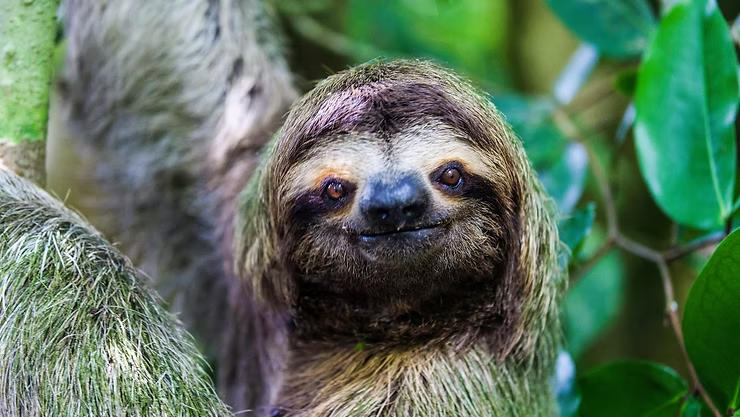Top 10 Fascinating Facts About Sloths
Sloths are among the most captivating animals in Central and South America. Known for their slow pace and gentle demeanor, these creatures have developed remarkable adaptations that allow them to thrive in the rainforest. From their unusual diet to their impressive camouflage, sloths are far more extraordinary than their laid-back reputation suggests.
1. The Slowest Mammals on Earth
Sloths move at a maximum speed of only 0.15 miles per hour. Far from being a weakness, their slow pace is a clever adaptation. By moving gradually, they conserve energy from their leaf-based diet and avoid drawing the attention of predators.
2. Masters of Sleep
On average, sloths sleep 15 hours a day. Their low body temperature of 30–34°C is regulated by shifting in and out of shade. Without incisors, they rely on strong lips to munch buds, twigs, and leaves.
3. Tree-Dwelling Experts
Spending nearly their entire lives in trees, sloths are built for an arboreal lifestyle. Their long arms and curved claws allow them to hang securely from branches, while their grip strength keeps them safe high above the forest floor.
4. Natural Camouflage
Algae growing on sloths’ fur gives them a greenish tint, helping them blend with surrounding leaves. Combined with their slow movements, this camouflage makes them nearly invisible to predators.
5. Survival Through Slow Metabolism
- Sloths conserve energy by maintaining a very low metabolic rate.
- Their slow digestion extracts maximum nutrients from tough leaves.
- They can survive on sparse resources thanks to this energy-saving adaptation.
6. Surprising Swimming Skills
Despite their sluggish image, sloths are excellent swimmers. They can move three times faster in water than on land and hold their breath for up to 40 minutes, making aquatic travel one of their hidden talents.
7. Peaceful Lifestyles
Sloths embody tranquility. They move mindfully, spend most of their time resting in treetops, and even practice a natural version of aerial yoga by hanging upside down. When threatened, however, they can make short bursts of quicker movement to escape danger.
8. Specialized Digestive System
Sloths have evolved an extremely long digestive tract to process leaves rich in cellulose. Their slow fermentation system enables them to absorb as many nutrients as possible from their low-energy diet, supported by their naturally low metabolism.
9. Solitary but Social at Times
Most of the time, sloths are solitary. However, during mating season they connect through vocalizations and scent cues. This brief interaction ensures the survival of the species before they return to their peaceful solitude.
10. Unusual Behaviors
- Sloths defecate only once a week, releasing up to 30% of their body weight.
- They face their greatest risk of predation during these ground trips.
- Mating is extremely brief, lasting only a few seconds.
In Conclusion
From slow-motion movements to hidden swimming abilities, sloths are full of surprising traits that make them stand out in the animal kingdom. Though endangered by habitat loss, these gentle creatures remind us to slow down, live peacefully, and appreciate the balance of nature. Protecting sloths means preserving one of the rainforest’s most fascinating wonders.
Frequently Asked Questions
How fast do sloths move?
They move up to 0.15 miles per hour, making them the slowest mammals on Earth.
What do sloths eat?
They primarily eat leaves, especially from cecropia trees, and occasionally buds and twigs.
Do sloths swim?
Yes, they are strong swimmers and can hold their breath for up to 40 minutes.
How long do sloths live?
They typically live 15–20 years in the wild and up to 40 years in captivity.
Are sloths social animals?
They are mostly solitary but interact briefly during mating season.

